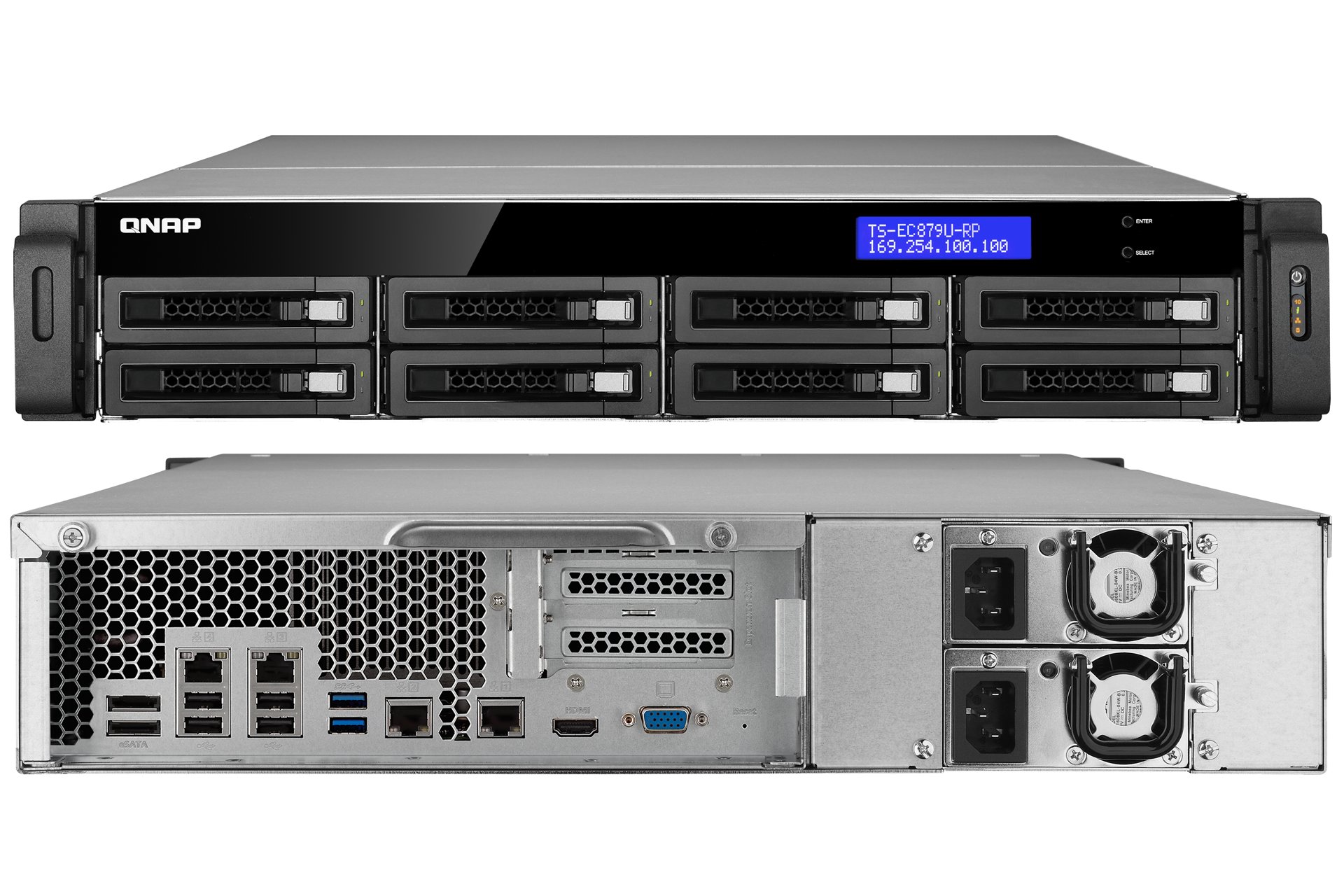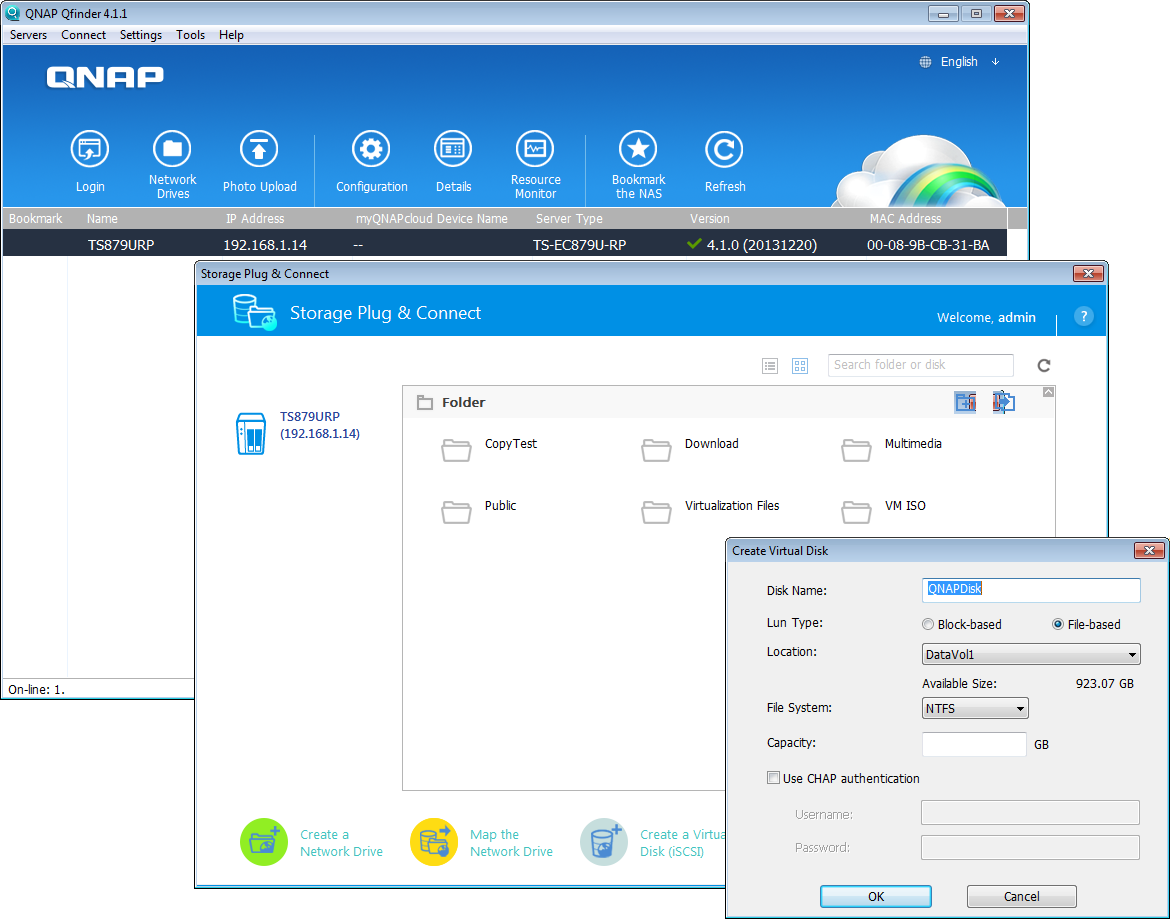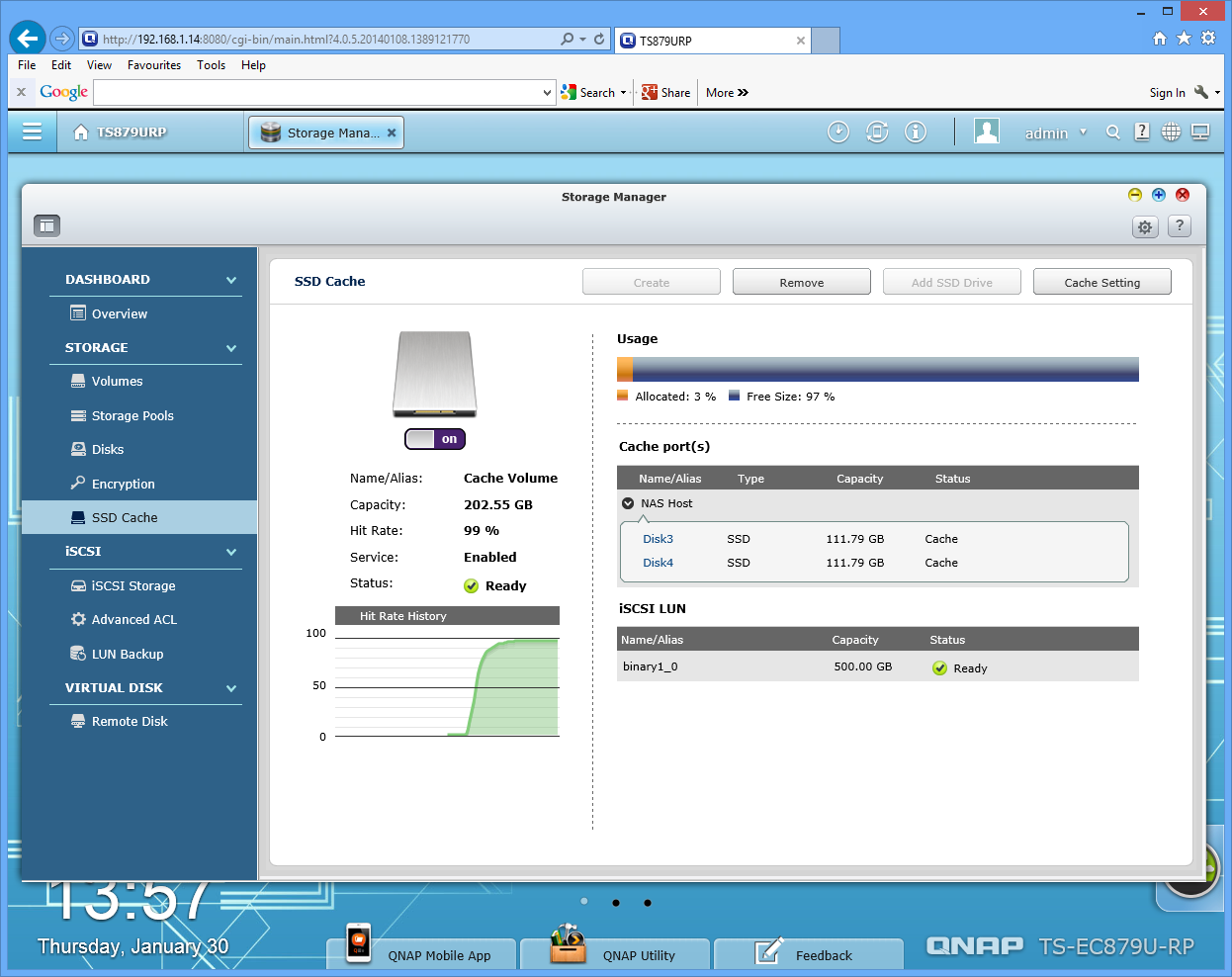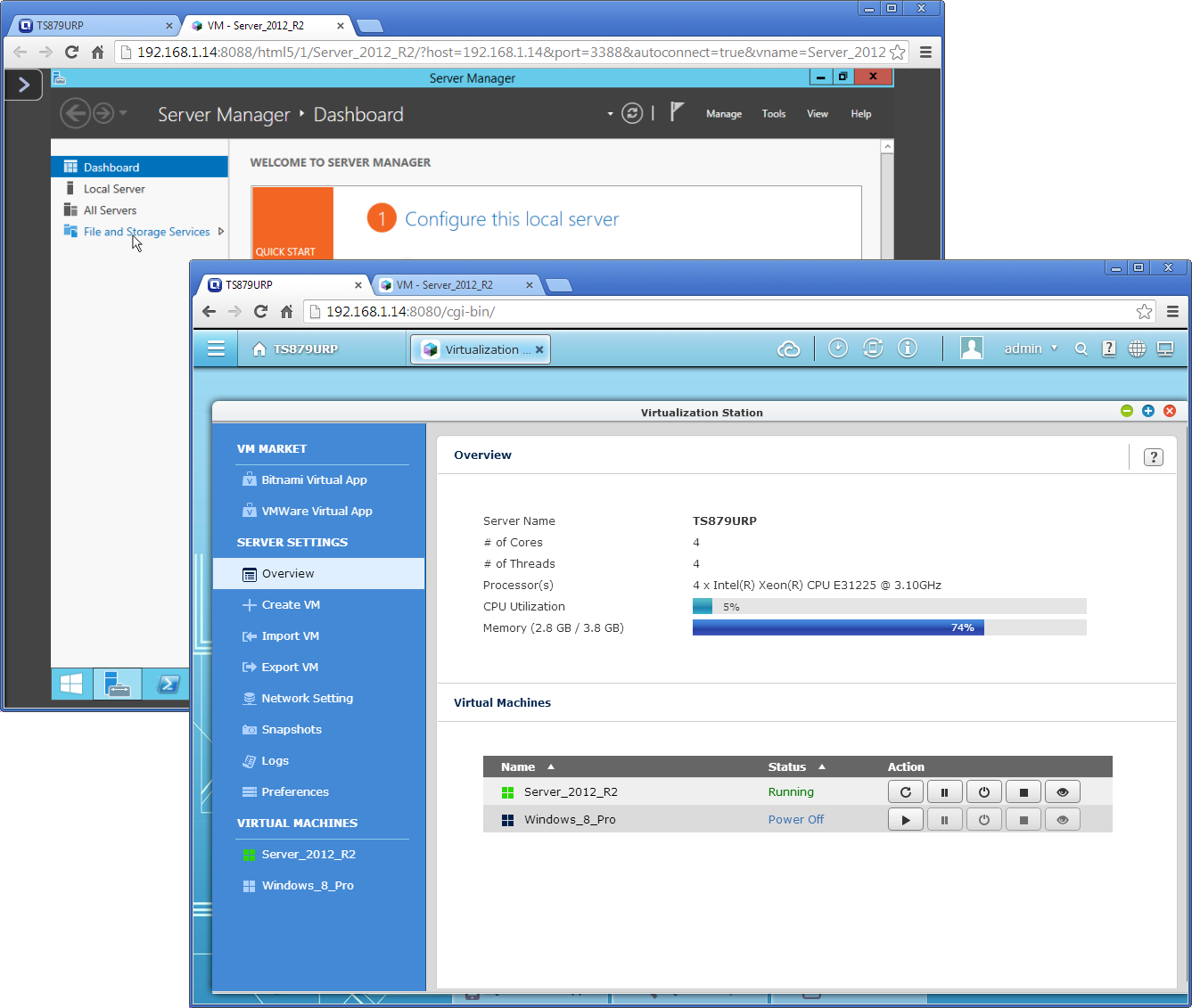Qnap TS-EC879U-RP (2014) review
Qnap’s 8-bay NAS appliance offers top speed and has interesting virtualisation features on the horizon.

The TS-EC879U-RP offers a multitude of features, top performance and SSD read caching. Expansion potential is massive, it supports 10GbE upgrades plus the next QTS version will increase versatility.
-
+
Easy deployment; Top performance; SSD caching; High capacity expansion; Huge features list
-
-
Expensive; Virtualisation Station will need a memory upgrade

Representing the entry point of Qnap's high-end SMB rack NAS appliances, the TS-EC879U-RP packs a lot into its 2U chassis including a high expansion, SSD caching and 10-Gigabit (10GbE) support. We also take a peek at QTS 4.1 which is in beta and includes the new Virtualisation Station.
The appliance sports a 3.1GHz E3-1225 Xeon teamed up with 4GB of DDR3 which can be pushed to 32GB. You also get 2 x USB3, 4 x USB 2 and 2 x eSATA ports plus dual 300W hot-plug PSUs.
The appliance has quad embedded Gigabit ports and the two PCI-Express slots support 10GbE cards and Qnap's dual-port SAS card for adding up to eight 16-bay disk shelves. Don't get palmed off with an early model as this only has two embedded Gigabit ports with a dual-port Gigabit card in one expansion slot.

Qnap's Finder eases installation along with share and iSCSI target creation
Installation
Qnap has implemented a quick setup routine using a code printed on the lid but this is only available for its SOHO and home appliances. For the TS-EC879U-RP you use the Finder utility which discovers the appliance and provides a wizard based setup routine.
For testing we created a RAID-5 storage pool using a quartet of 4TB WD Enterprise SATA drives. We then upgraded to the latest QTS release version which adds the Storage Manager utility and SSD caching.
Finder's Storage Plug and Connect feature makes light work of creating and mapping NAS shares. You can also create iSCSI targets from the same interface where it handles all initiator login processes and virtual drive formatting.
It doesn't offer the thin provisioning feature which can only be enabled when virtual volumes are created from the Storage Manager. This also offers the LUN Backup feature which supports file-based targets and can use CIFS or NFS remote backup locations.

Qnap's SSD read caching is simple to configure and can make a big difference to IOPS
Storage Manager
The web interface is a slick affair and its Storage Manager tool neatly brings all storage related operations under one roof. From here, you can create storage pools using selected drives, choose a RAID level and expand them into unused disk space if required.
Storage pools support both NAS shares and iSCSI volumes and you can create encrypted volumes as well. The Remote Disk option lets you assign iSCSI targets on other systems to the appliance and create network shares on them.
SSD read caching is also configured from here and to test this we used a pair of 120GB OCZ Deneva 2 Enterprise SSDs. Only bays 3 and 4 support SSDs and when you create the cache it uses both drives as a stripe.
It provides a status graph showing the hit rate percentage and the cache can be enabled and disabled on the fly. You can also decide which NAS volumes and iSCSI targets you want to apply cache acceleration to.

The new Virtualisation Station app in QTS 4.1 beta makes the appliance even more versatile
Get the ITPro daily newsletter
Sign up today and you will receive a free copy of our Future Focus 2025 report - the leading guidance on AI, cybersecurity and other IT challenges as per 700+ senior executives
Dave is an IT consultant and freelance journalist specialising in hands-on reviews of computer networking products covering all market sectors from small businesses to enterprises. Founder of Binary Testing Ltd – the UK’s premier independent network testing laboratory - Dave has over 45 years of experience in the IT industry.
Dave has produced many thousands of in-depth business networking product reviews from his lab which have been reproduced globally. Writing for ITPro and its sister title, PC Pro, he covers all areas of business IT infrastructure, including servers, storage, network security, data protection, cloud, infrastructure and services.
-
 Nvidia braces for a $5.5 billion hit as tariffs reach the semiconductor industry
Nvidia braces for a $5.5 billion hit as tariffs reach the semiconductor industryNews The chipmaker says its H20 chips need a special license as its share price plummets
By Bobby Hellard Published
-
 Business leaders are having a crisis of confidence over data literacy
Business leaders are having a crisis of confidence over data literacyNews A Salesforce survey reveals business leaders don't trust their data, or their ability to make the most of it
By Emma Woollacott Published
-
 MITRE CVE program handed last minute reprieve amid funding lapse concerns
MITRE CVE program handed last minute reprieve amid funding lapse concernsNews Funding for the vulnerability database was set to expire, but it's been handed a life line
By Rory Bathgate Last updated